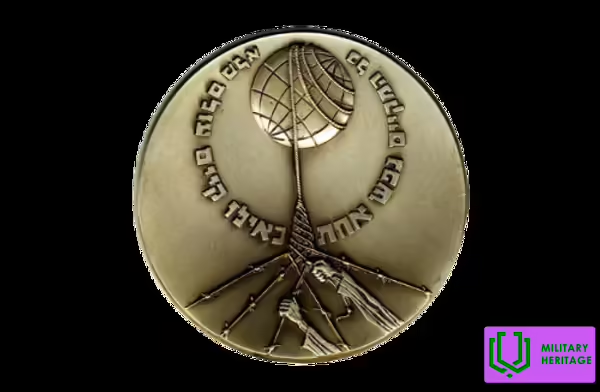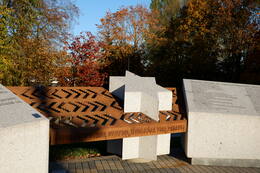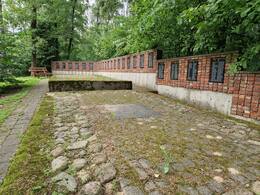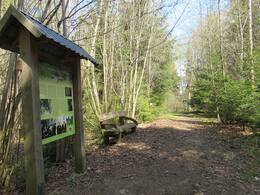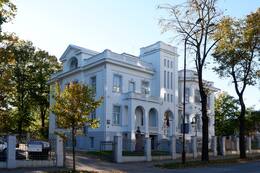The Righteous Among the Nations of the World II WW2
Righteous Among the Nations is an honorary title given to non-Jewish individuals for saving Jews during the Holocaust (1933-1945) without seeking personal gain. The title is awarded by a commission under Yad Vashem (the Israeli Holocaust Research Institute in Jerusalem, founded in 1953) and chaired by a justice of the Supreme Court of Israel. The award is given regardless of the person's social status - members of the royal families have also received it, for example, Princess Helena of Denmark and Greece, Princess Alice, and Queen Elisabeth of Belgium.
The search for evidence for the granting of the name begins when the rescued person himself or his relatives apply. The commission carefully examines all documentation, including the testimonies of survivors and other witnesses, assesses the historical circumstances and the threat that existed for the rescuer himself. The main criteria are: only a person of Jewish nationality can apply for the nomination, the assistance must be provided not to a family member or a person who has converted to Christianity, it must be long-term or substantial, and provided without receiving financial benefit.
Those recognized as Righteous Among the Nations are awarded a special medal with an inscription from the Babylonian Talmud: "By saving one life, you have saved the whole world" and a certificate of honor. If the recipient is deceased, the award is presented to their closest relatives. The name of the Righteous is engraved on the Wall of Justice in Yad Vashem's Garden of Justice. Previously, a tree was planted in each person's honor, but due to lack of space, the names are now immortalized on the wall. The awards are presented during a special ceremony in Israel, and if the person is unable to attend, the award is presented by Israeli diplomats residing in their country.
By the beginning of 2022, 28,217 people from 51 countries had been awarded the title of Righteous Among the Nations, including 924 Lithuanian citizens. The largest number of recipients were citizens of Poland (6,992) and the Netherlands (5,778). In terms of the ratio of the number of people who saved Jews during the war to the total population, Lithuania ranks second after the Netherlands.
In Lithuania, rescuing Jews was punishable by death, not only for the rescuer, but also for his entire family. Residents were warned about this by posted notices. In wartime, people had to be hidden not only from the authorities, but also from neighbors or colleagues, because living in an atmosphere of fear, anyone could turn against them for personal gain. The most common ways of helping were providing shelter in one's own home, providing forged documents, and helping to escape from ghettos or prisons.
Among the most famous Lithuanian Righteous Among the Nations is President Kazys Grinius, who in 1942 submitted a letter of protest to the German General Commissariat in Kaunas regarding the murder of Lithuanian Jews and hid Dmitriy Gelpern in his home in 1941-1942. Ona Šimaitė, a librarian at Vilnius University and the first Lithuanian woman to receive this title (1966), used her working position to enter the Vilnius ghetto, bring in food and other supplies, take out valuable historical documents, seek shelter for people, and take out children who had been put to sleep in baskets.
Writer Kazys Binkis and his wife Sofija, whose house was called the "Jewish Hotel", Danutė Čiurlionytė-Zubovienė and Vladimiras Zubovas, who hid and sheltered several dozen Jews, artist Olga Kuzmina-Dauguvietienė, Šiauliai Mayor Jackus Sondeckis, who saved the famous theater expert Markas Petuchauskas and his mother, pediatrician Petras Baublys, who saved children in the Kaunas Children's Home "Lopšelis", and Steponas Kairys, a signatory of the 1918 Act of Independence, who, with his wife Ona, sheltered 11-year-old Anusė Keilsonaitė from the Vilnius ghetto in 1942 - these are just some of the brave people who risked their lives saving others.
In Lithuania, the facts of the rescue of Jews were kept secret for a long time, and only after the restoration of Independence did the rescued stop hiding it. Since 2005, ceremonies honoring the Righteous Among the Nations of the World have been held regularly in Lithuania. In 2015, a street in Vilnius was named after Ona Šimaitė, in 2018 a memorial stone to the rescuers of Jews was unveiled in Vilnius, and in 2019 a square named after the "Righteous Among the Nations" was opened in Šiauliai. A traveling exhibition "Saving One Life, Saves the Whole World" is traveling around the country, telling the stories of 105 rescuers. Since 2019, the graves of the Righteous have been marked with a special 76 mm diameter brass sign with two clasped hands and inscriptions in Lithuanian, English and Yiddish.
More information sources
Related timeline
Related objects
Square for the Righteous Among the Nations (Monument)
On 22 October 2021, the Square for the Righteous Among the Nations (monument) was inaugurated in Šiauliai, at the intersection of Ežero and Vilniaus streets. It is the first monument to the Righteous Among the Nations in Lithuania. The monument was created by the designer Adas Toleikis, a native of Šiauliai, and the idea of the monument was initiated by Sania Kerbelis, the chairman of the Jewish community of Šiauliai County.
The monument “Jungtis” is engraved with the surnames of the “Righteous Among the Nations” of Šiauliai County, thus commemorating 148 Jewish rescuers, while artistic accents mark the gates of the Šiauliai Ghetto. There were two ghettos in Šiauliai: in the so-called Kaukazo Quarter and in the Ežero-Trakų Street Quarter. Physically strong and able-bodied people were sent to the first one, and specialists (doctors, mechanics, etc.) to the second. The Šiauliai Ghetto was established in the summer of 1941 on the orders of the Šiauliai Commandant and liquidated in 1944 with the retreat of Nazi German troops. The remaining Jews were transferred to Stutthof and Dachau concentration camps. More than 5,950 Jews were imprisoned in the Ghettos. During the inter-war period, Šiauliai was home to about 6,500–8,000 Jews, some of whom left voluntarily into mainland Russia. After the Holocaust, there were only about 350–500 Jews left.
Kaušėnai Holocaust Memorial
In the village of Kaušėnai (Plungė district), a memorial to the victims of the Kaušėnai Holocaust has been established at the site of the murder of the Jews. The memorial is dedicated to the Jewish communities of Plungė and the surrounding villages that were destroyed during World War II.
The memorial was established based on the initiative of the last Jew of Plungė, Jakovas Bunka. The first monument to the victims of the Second World War was erected in 1952, and in 1986–1989, a memorial to commemorate the murdered Jews was created from oak monuments. 1,800 bricks of the demolished Plungė Synagogue were used to build the Memorial Wall in 2011, where each brick is dedicated to the memory of someone murdered,
and plaques with the known names of 1,200 (out of 1,800) Jews are affixed to the wall. The Alleyway of the Rescuers is located near the memorial, and the names of those who rescued the condemned Jews in Plungė and its surroundings during the Nazi occupation are inscribed on the posts in the alleyway.
On 12 and 13 July 1941, about 1,800 Jews from the Plungė district were murdered on Kaušėnai Hill, having been held for two weeks in brutal conditions in the Plungė synagogue before that. On the day of the genocide, those who could were made to walk five kilometres to the place of execution, while the rest were transported in separate groups by lorry. The victims were ordered to dig their own graves and then they were shot.
The memorial is one of the ten most impressive memorials in Europe reflecting the tragedy of the Jewish people.
Vytautas Mačernis Birthplace Trail
In the village of Šarnelė, Plungė district, in the birthplace of the Lithuanian poet Vytautas Mačernis, a path to the poet's birthplace has been established. Walking along this 545 m long path, you will reach the poet's grave. The poet died on October 7, 1944, during the Battle of Seda, when he was accidentally hit in the head by a fragment of an artillery shell. After his death, the poet's relatives returned the deceased back to Šarnelė to be buried in his homeland.
While walking along the V. Mačernis hiking trail, don't miss the nearby Kerpauskas spring and information stand. This spring commemorates an important historical period - the genocide of the Jewish people during World War II. The Kerpauskas spring is located by the path leading from the parking lot to the poet's grave. During World War II, the family of Juozas and Adolfina Kerpauskas hid Jews in underground bunkers installed at the foot of a small hill near the spring and in the homestead below. For three and a half years, the family took care of several Jewish families - 16 people in total - and protected them from destruction. During the Soviet era, Adolfina and Juozas Kerpauskas and their children Bronė and Tomas were deported to Siberia. Juozas Kerpauskas in 1992 and Adolfina Kerpauskienė in 2009 were awarded the Salvation Cross.
Venclauskiai House-Museum
The Venclauskiai House-Museum is an outstanding example of historical architecture from the inter-war period in Šiauliai. The building, also known as the White Castle, was built for the family of Kazimieras Venclauskas and Stanislava Venclauskienė in 1926 on the land of the former suburb of Šiauliai City. Kazimieras and Stanislava Venclauskiai – members of the Lithuanian national movement and the restoration of the Lithuanian state, are also famous as guardians of many orphans and abandoned children.
During the Second World War, Stanislava Venclauskienė and her daughters Danutė and Gražbylė became famous as rescuers of Jews. Ignoring the fact that, during the war, the German commandant’s office was stationed in their house, they helped the Jews imprisoned in the Šiauliai ghetto by hiding them in the house. Danutė Venclauskaitė had a permit to enter the Šiauliai ghetto, so she secretly brought food and medicine with her when she visited. All three women have been awarded the honorary title “Righteous Among the Nations” and the Life Saving Cross.
In 1991, Gražbylė and Danutė Venclauskaitės donated their family house to the Aušros Museum in Šiauliai. The Venclauskiai House-Museum was opened in 2019 after the reconstruction of the building. The permanent exhibition of the museum tells the story of the Venclauskiai family, while the semi-basement rooms are dedicated to the Holocaust and the rescue of the Jews.
Related stories
The exploits of the villagers of Šarnelė
During World War II, two families from the village of Šarnelė – the Striaupiai and the Kerpauskas – despite mortal danger, saved the lives of Jews. The Striaupiai family saved as many as 26 people, including nine families, and a hiding place was set up in the forest of the Kerpauskas homestead for the family of a Jewish furrier from Alsėdžiai.




